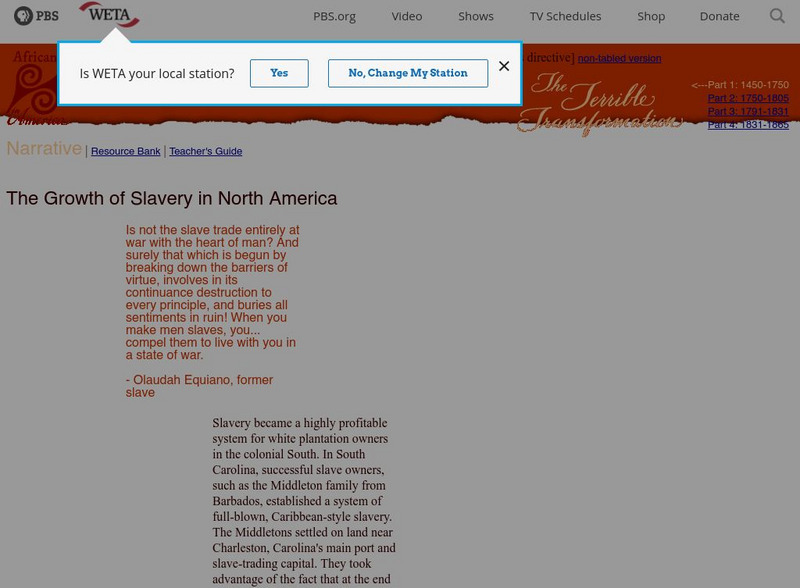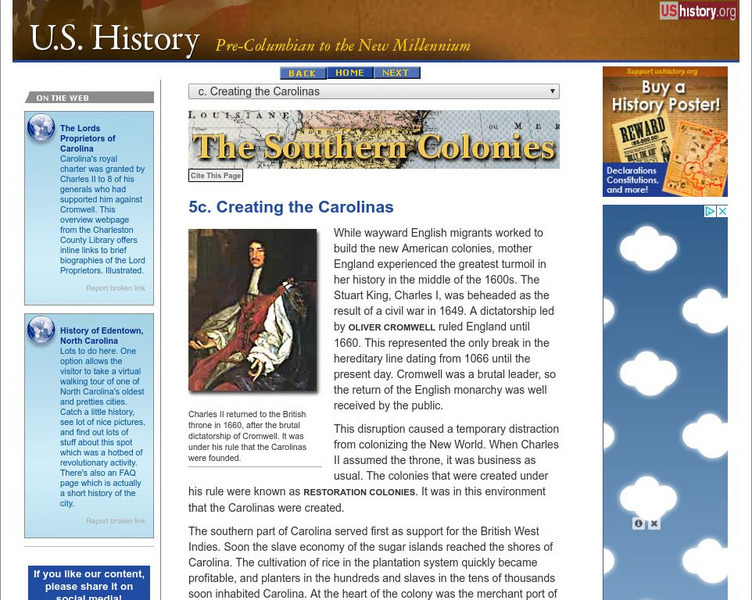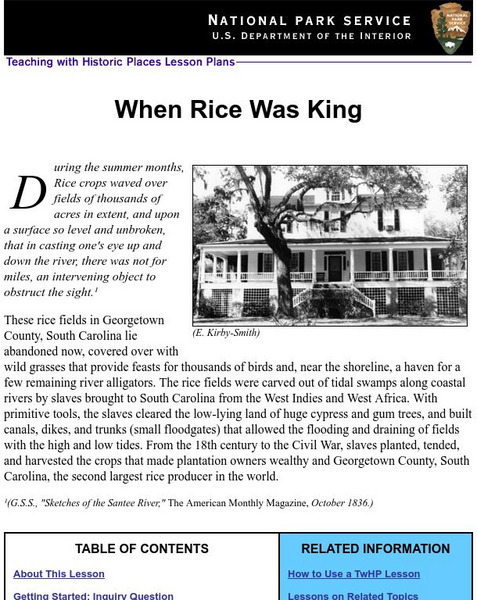Curated OER
The Role of African Slaves on South Carolina Rice Plantations
Fourth graders investigate the role of African American slaves in rice plantations. In this slave life instructional activity, 4th graders discuss the products produced in the 13 colonies. Students discuss the importance of rice to South...
PBS
Pbs: Cet: Africans in America: Arthur Middleton
This lesson describes the rice cultivation on Arthur Middleton's South Carolina plantation and the importance of slaves to this cultivation. It also offers a description of the Middleton Family. Click on Teacher's guide for teaching...
PBS
Pbs: Cet: Africans in America: The Growth of Slavery in North America
Discusses the economics of slavery in South Carolina and its importance to the profitable growing of rice. It continues with ways the slaves were controlled and punished in South Carolina and Georgia. Click on Teacher's Guide for teacher...
Duke University
Plantation America: The Work of Slaves
On this webpage, the primary text contains selected entries from letters and journals. It also describes slaves delivering rice to Savannah, slave numbers, their condition on a plantation, how slaves were used, and a map and a drawing of...
Independence Hall Association
U.s. History: Southern Colonies: Creating the Carolinas
Read about the founding of the Carolina colony as a place of plantations and aristocrats. See how the farmers in the northern part of Carolina chafed at the control of the rich in the south and split off into North and South Carolina in...
Curated OER
National Park Service: Rice Cultivation in Georgetown County
Describes the planting, cultivating, harvesting, and preparing rice in the antebellum South. Contains review questions.
Curated OER
National Park Service: Teaching With Historic Places: When Rice Was King
Lesson plan teaching the rice culture of Georgetown County, South Carolina in the 1700's.
Curated OER
National Park Service: Plantation Agriculture: Coastal Rice
Brief description of coastal rice plantations in the late 18th and early 19th centuries from the National Park Service.









